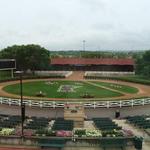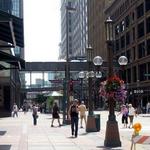Phil & Ruth
Things To Do


Take a Drive to the Northshore
Lake Superior, the largest of the Great Lakes of North America, is also the world's largest freshwater lake by surface area, and the third largest freshwater lake by volume. There are so many things to do on the Northshore from the port City of Duluth up North to the Canadian Border. The Great Lakes Aquarium includes salt- and freshwater animals. Housed in a former train depot, Lake Superior Railroad Museum features vintage locomotives. Glensheen is a 1908 mansion on a vast lakeside estate. Find the highest Minnesota waterfalls on the North Shore! From Lester River Falls to Gooseberry Falls to High Falls at Grand Portage State Park. The Lake Superior Maritime Center, Split Rock Historical Center and the North Shore Fishing Museum in Tofte offer displays, exhibits and videos on Lake Superior’s shipping activity and famous shipwrecks. The lighthouses on the Northshore are something to see as well. Split Rock was one of our favorites.
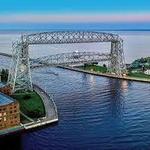
Aerial Lift Bridge
The Aerial Lift Bridge is a landmark in the port city of Duluth, Minnesota. The span began life in 1905 as the United States' first transporter bridge. In 1929–30, the span was converted to a vertical lift bridge, and continues to operate today.
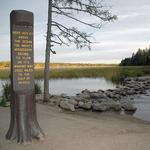
Mississippi Headwaters
The Mississippi River gets its start in Minnesota, and its headwaters at Itasca State Park are a must-see destination. Taking your picture next to the iconic headwaters post is a must when you visit the park! The historic marker dates back to the 1930s, and indicates the Mississippi River's total mileage at 2,552 miles. Since then the river's course has been shortened and altered by flooding and channeling. Every summer canoeists leave Lake Itasca to begin their river adventures, with hopes of reaching the Gulf of Mexico over 2,318 miles away. Visitors also enjoy wading across the shallow 18-inch deep water, crossing from the east side to the west side, where a rock dam indicates the end of Lake Itasca and the beginning of this mighty river.

Minnesota Landscape Arboretum - Advance Reservations/Tickets Required
The Minnesota Landscape Arboretum welcomes, informs and inspires all through outstanding plant displays, protected natural areas, horticultural research and innovative education. We strive to create a welcoming space to learn from and connect with nature.

Paisley Park
Paisley Park is Prince’s extraordinary private estate and production complex in Chanhassen, Minnesota. Fans will have the unprecedented opportunity to experience first-hand what it was like for Prince to create, produce and perform inside this private sanctuary and remarkable production complex.
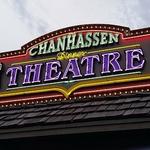
Chanhassen Dinner Theatres
Chanhassen Dinner Theatres is the nation’s largest Equity (professional status) dinner theatre company featuring multiple stages under one roof. In addition, CDT is Minnesota’s only year-round musical theatre and the largest tourist attraction in Carver County. Founded in 1968, Chanhassen is a producing theatre, completely creating and executing all production elements in the theatres’ own on-site scene, costume and properties shops by its own creative design team led by Resident Artistic Director Michael Brindisi.
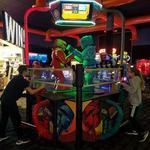
Dave & Buster's
At Dave & Buster's you can play hundreds of the hottest new arcade games in our Million Dollar Midway and win tickets for epic prizes. Try our mouth-watering, chef-crafted creations in our American restaurant. From wings to steaks, we've got whatever suits your appetite. Our premium sports bar features innovative cocktails, impressive wine selection, and 20+ beers to assure we're stocked to satisfy! Watch your team on one of our massive HDTVs with epic stadium sound that surrounds you from every direction in the sports bar that crushes the competition. Invite all your friends or coworkers for an unforgettable party or event! We work with every size and budget to make planning easy so you can focus on the FUN!
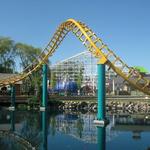
Valleyfair
Fun for the Whole Family Valleyfair has you covered whether you are looking to take a spin on the newest family thrill ride Delirious or enjoy some of the area’s most entertaining events. Valleyfair has all the fun you are looking for in a place where the fun never ends!

Minnesota's Largest Candy Store
Minnesota’s Largest Candy Store, also known as Jim’s Apple Farm, is located near Shakopee in Jordan, MN. This can’t miss yellow barn and fence, located along Highway 169, is one of Minnesota’s most unique attractions. Come to this seasonal business for hard-to-find sweets, wonderful and fresh baked goods, the world’s largest selection of soda’s, a large variety of popcorn, pastas, and meats and other products raised or made locally by surrounding farms. This unique and nostalgic place is the perfect spot for people of all ages!
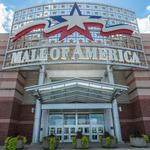
Mall of America®
Located in the bustling suburb of Bloomington, the Mall of America is basically an overwhelming ode to consumerism. But it’s nevertheless worth a look. Instead of spending your hard-earned money at any of the hundreds of overpriced retailers here, spend a couple hours walking around the mall’s four floors of commercial space, then hit the adjacent aquarium ($17.49 for kids, $24.49 for adults) or IMAX-grade movie theater (tickets start at about $10 per show).
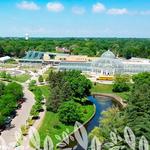
Como Park Zoo & Conservatory
For over one hundred years, Como Park has played a vital role in meeting the recreational needs of residents of Saint Paul and surrounding communities. Inspired in part by the landscape designs of H.W.S. Cleveland, Frederick Nussbaumer, Superintendent of Parks from 1891 to 1922, worked tirelessly to create an outdoor haven for the area’s urban population. Nussbaumer strongly advocated for a wide variety of free or reasonably priced recreational activities, services, and educational opportunities for all park visitors. The park as we know it today continues to carry out this original vision.
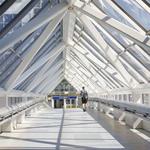
Minneapolis Skyway System
The Minneapolis Skyway System is an interlinked collection of enclosed pedestrian footbridges that connect various buildings in 80 full city blocks over 11 miles of Downtown Minneapolis, enabling people to walk in climate-controlled comfort year-round. It is the longest continuous system in the world.

Minnehaha Park and Waterfall
Park Hours 6 am to midnight in developed areas and 6 am to 10 pm in undeveloped areas One of the city's oldest and most popular parks features a majestic 53-foot waterfall, limestone bluffs, and river overlooks, attracting more than 850,000 visitors annually.

Minneapolis Stone Arch Bridge
The Stone Arch Bridge is a key link in the St. Anthony Falls Heritage Trail, which has pedestrian walkways and bicycle lanes. The Heritage Trail is a two-mile trail with an extensive system of interpretive and directional signs and kiosks. The Stone Arch Bridge is the only bridge of its kind over the Mississippi River. It is made of native granite and limestone, and measures 2100-feet long by 28-feet wide. The bridge consists of 23 arches, and spans the river below St. Anthony Falls in Minneapolis, MN.
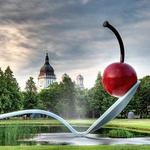
Minneapolis Sculpture Garden
One of the crown jewels of the city’s park system, the Minneapolis Sculpture Garden unites two of Minnesota’s most cherished resources—its greenspace and its cultural life. A partnership with the Minneapolis Park & Recreation Board, the Garden is a top destination for tourists to enjoy art like the iconic Spoonbridge and Cherry in an outdoor park setting.
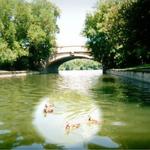
Chain of Lakes
Shorelines of Brownie Lake, Cedar Lake, Lake of the Isles, Bde Maka Ska, and Lake Harriet, including the trails connecting them and Lyndale Park... all surrounded by pedestrian walking paths (14.81 miles). The most scenic stretches are in the southern part of the city, between Lake of the Isles and Bde Maka Ska, Harriet and Nokomis lakes to Minnehaha Park and up the Mississippi River to the east end of Franklin Avenue.

Go to a Twins Game
Target Field is a baseball park in the historic warehouse district of downtown Minneapolis. It is the home ballpark of the Minnesota Twins, the state's Major League Baseball franchise. It also has served as the occasional home of Minnesota Golden Gophers baseball, and other local and regional baseball events.

Midtown Global Market
If you're looking for a more unique shopping experience, skip the Mall of America and head to the Midtown Global Market, where more than 50 vendors sell food and trinkets ranging from local produce to Somalian Pastries, Middle Eastern olives and Asian spices. There are also cultural events — from musical performances to Irish step-dancing lessons.

Eat A Juicy Lucy
Minneapolis is the birthplace of the almighty juicy lucy, a burger with the cheese stuffed into the middle of the patty rather than placed on top. It may sound like a simple swap, but it makes all the difference. Two well-known Minneapolis restaurants claim to be the inventors of the burger, Matt’s Bar and the 5-8 club. Locals often have their favorite – and their own opinion on who really invented the burger.

Visit one of the many Breweries
While we don’t want to play favorites, we would be remiss in not mentioning the brewery that seems to have taken Minneapolis by storm…Surly! One of the top breweries in the nation, Surly is a 50,000 square foot modern marvel on the base of an old potato processing plant in an industrial park. The space is jaw dropping yet elegant, and pairs beautifully with hops and a great conversation. Because of Surly, all tourists, beer enthusiasts and locals are able to indulge in finely crafted homegrown brew across Minnesota. Until The Surly Bill was signed into action by Governor Mark Dayton in 2011, Minnesota breweries were not allowed to serve pints of their beer on site. Needless to say, Surly is kind of a big deal in Minneapolis. Of course, there are so many breweries in Minneapolis that they all love!
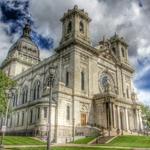
Basilica of Saint Mary
The Basilica of Saint Mary is a Roman Catholic minor basilica located on its own city block along Hennepin Avenue between 16th & 17th Streets in downtown Minneapolis, Minnesota. It was the first basilica established in the United States.

Mill City Museum
Minneapolis' origins were as a mill town, first processing timber, and then becoming the largest flour-producing city in the nation in the late 19th and early 20th centuries. Today the flour mills stand idle, have been razed, or converted to chic lofts, but you can see a glimpse of that time at the Mill City Museum on the bank of the Mississippi in downtown Minneapolis. Originally operated by General Mills, the mill exploded and caught fire several times during its working life. Once abandoned, an almost catastrophic fire destroyed much of the mill. The Minnesota Historical Center finally took charge of the remains, which were stabilized and a museum was built inside the ruins. The museum is one of the best places to explore the history of Minneapolis.
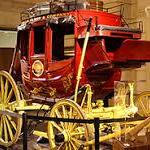
Wells Fargo Museum
Discover the story behind the stagecoach! Enjoy a fun-filled, hands-on experience including treasure boxes and gold nuggets. Explore a turn-of-the century bank, discover frontier transportation with an antique stagecoach, test 19th century communication with a working telegraph, and more. The museum store features a variety of Wells Fargo branded gifts, collectibles and apparel. Guided tours are available by reservation and admission is always free.

Minneapolis Institute of Art
The Minneapolis Institute of Art (Mia) has a large collection of works from many countries and in many styles, including pictures by European masters such as Rubens and Rembrandt. The collection features pieces from a wide variety of cultures dating back 5,000 years. On display are sculptures, photographs, paintings, drawings, textiles, and prints. Admission is always free, and so are the public tours, and with a Family Center on-site, this cultural resource is a good option for all ages.
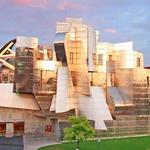
Weisman Art Museum
The Weisman Art Museum at the University of Minnesota is an architectural highlight of the campus and the city. Designed by Frank Gehry, the building is an eye-catching, four-story, stainless steel structure of a hard-to-define shape. The museum's collection focuses primarily on American Modernism, traditional Korean furniture, and ancient Mimbres pottery from the American Southwest. The museum's Public Art on Campus program has resulted in a variety of art being displayed around the campus. General admission to the facility and all exhibitions is free.
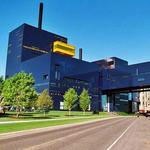
Guthrie Theater
The Guthrie Theater opened on May 7,1963 with a production of Hamlet directed by Sir Tyrone Guthrie, the theater's founder. Today, the theater presents classic and contemporary productions on three different stages and has remained true to its commitment to offer productions of Shakespeare's plays. More than 40 years after it was established, a new building was constructed in 2006, situated along the Mississippi River. The unique building showcases large images of past performances on its exterior. Touring the facility is a fun part of any visit, and the theater offers guided backstage tours on Friday and Saturday mornings.
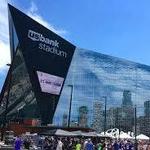
U.S. Bank Stadium
Home of Super Bowl 52, U.S. Bank Stadium opened on July 22, 2016, and boasts quite a few upgrades from the Metrodome that once stood in its spot. Almost double the square footage, increased seating capacity, and an indoor-outdoor experience due to the state-of-the-art, partly transparent, and largest in the country ETFE roof that allows light in while ensuring weather stays out all contribute to the unique viewing experience. The LED lighting is also the first of its kind in a new NFL stadium and provides the ability to switch more quickly between colors and intensities, allowing for enhanced entertainment and performances. You can also find 131 suites, six club areas, and plenty of local food and drink options to complete the stadium experience.

Wabasha Street Caves
Technically mines excavated during the early 19th century, the Wabasha Street Caves were once the epicenter of mafia and gang activity in the Twin Cities. During Prohibition, the caves were used as fortified hideouts for mobsters, warehouses for illicit booze, and speakeasies for made men and their guests. A 40-minute tour of the caves and surrounding complex costs $8 per adult. The longer St. Paul Gangsters bus tour, which hits other local sites popular with Prohibition-era gangsters, costs $27 per adult.

Fort Snelling State Park
Established in the early 19th century as a frontier outpost, Fort Snelling is the oldest structure in Minnesota. Its perch over the converging point of the Mississippi and Minnesota rivers allowed it to successfully control trade routes in the Upper Mississippi Valley. Today, Fort Snelling acts as a living history museum, with costumed tour guides offering ample information on its past. There are also exhibits detailing the site's history within the visitor center and "activity centers" scattered across the site that help visitors learn more about the Dakota homeland, immigration, soldiers and more. During the summer, the fort hosts numerous history-themed events, including demonstrations, competitions and youth programs.

Can Can Wonderland
What can’t can’t you do at Can Can Wonderland? Where classic fun meets quirky drinks. Where it’s socially acceptable for adults to act like kids. Where your diet doesn’t matter, and your responsibilities are forgotten. Take a step inside and look around at the artistically decorated walls, interior and games. Head over to their mini golf for “18 holes of fun,” comprised of many responses to the question “What mini golf hole have you always wanted to play?” This isn’t your typical course. With the help of architects, visual artists and engineers, Can Can Wonderland’s mini golf course was born. It’s the mini golf of all mini golfs, and you must experience it. If you’re into old school games, you might want to try the Boardwalk Arcade. Over 20 of your favorite vintage arcade games at your fingertips. Ping pong, air hockey and the incredible collection of pinball games will have you in awe.
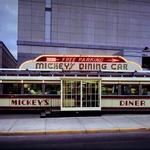
Mickey's Diner
Mickey’s Diner was designed to resemble the railroad dining cars of the period. It is unique in that it is one of the first diners to be built in the Art Deco style. Mickey’s Dining Car was manufactured in New Jersey and shipped by rail on a flat bed to its present location. Mickey's Diner has been featured on the Food Network series Unwrapped, Roker on the Road, Rachel Rays' Tasty Travels, and Alton Browns' Feasting on Asphalt. Mickey's has appeared in The Smithsonian, National Geographic, Sports Illustrated, Easy Rider, Playboy and Elle magazines. Mickey's Dining Car has been replicated as a collectible by Department 56, The Danbury Mint and Saks Fifth Avenue. The Mighty Ducks I, II, III, Jingle All the Way and A Prairie Home Companion movies contain scenes that were shot on location at Mickey's.

